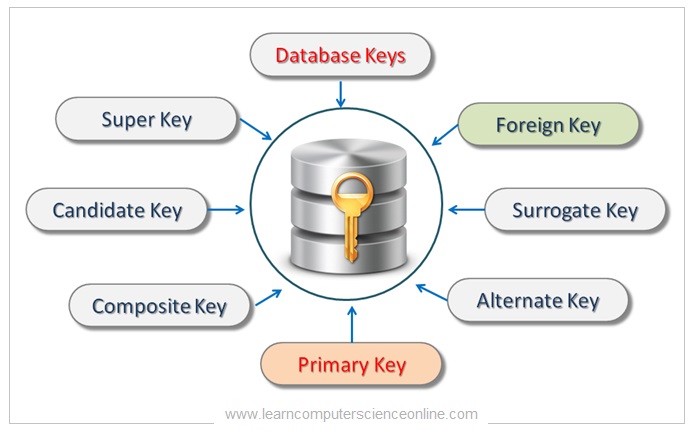Features of Database-Everyone are aware of the significance of data in the modern world. Every day, enormous amounts of data are crop, and a great deal of research is done on it so businesses and startups may base their decisions on it. But have you ever considered how people manage the enormous amount of data generated daily? A “Database” is the response to this query.
A Features of Database system’s ability to give users an abstract view of data, or to conceal some of the specifics of how data is stored and maintained, is one of its key features.

1. Data abstraction
Data abstraction is the ability to display the information required for a user and conceal the remaining information. Because many database system users lack computer literacy, developers use multiple levels of abstraction to obscure the complexity of users and streamline user interactions with the system.
Physical level: This level specifies how data is kept physically in the database.
Logical level: At this level, the database’s data save, and any relationships that may exist between them. A community of users gives descriptions of the complete database. Database administrators (DBAs), who must choose what data should be stored in the database, employ the logical level of abstraction. Centralised control over the data and the applications that access it is one of the key benefits of using DBMSs. A database administrator is a person who has extensive administrative control over the system (DBA).
View level: This level only shows the portion of the complete database that a given user group is interested in and conceals the remainder from that user group. For the same database, the system may offer a variety of views.
2) Instances and Schemas
As data add and removed, databases evolve. An instance of the database is the data kept there at a specific time. The term “database schema” refers to the overall layout of the database. Schemas did not anticipate change regularly.
3) Data independence
Data independence is the capacity to change a schema definition at one level without affecting the schema definition at the next higher level. There are two levels of data independence.
A] Physical data independence-It is the capacity to modify the physical schema without changing the logical schema. However, it is occasionally required to make physical adjustments to boost performance.
b) Logical data independence – This refers to the capability of altering the logical schema without altering the view-level schema. Anytime the logical structure of the database is changed, modifications at the logical level are required.
The idea of keys in a Features of Database
A collection of tuples refers to as a relation. Since every set member is distinct by definition, every tuple in a relation must also be. Furthermore, it implies that no two tuples can have the same values for each property. The multiple keys used in databases include:

Superkey – A superkey, SK, establishes a uniqueness constraint that states that no two tuples in any state r of R have the same value for SK. In other words, a superkey defines the restriction that two distinct tuples in any relational state cannot share the same values for (all) the key attributes. Every relation has a set of characteristics as at least one default superkey. There may be redundant attributes in a superkey.
Essential – A key, K of a relational schema R is a superkey with additional property removing any attribute A from K results in a set of attributes K that is no longer a superkey of R. Consequently, a key complies with two requirements:
1) It is a minimum superkey, meaning that we cannot delete any attributes from the superkey and still, the uniqueness constraint in condition one hold.
2) Two separate tuples in any state of the relation cannot have the same values for (all) the attributes in the key.
The Essential Elements Of A Database
- Tables like the one below uses to store data or information in databases: You may view every record that is kept in the database using the table. Tables can hold a significant number of records, ranging from a few dozen for a small database to millions for a database for a big business.
- There are numerous records in each table. A description is composed of multiple distinct pieces of information. For example, look at Wonder Woman’s report; it has information about her age, first and last names, address, and city. A “field” is the term used to describe each of these discrete pieces of data in a record. A “field” is a single item of data or information about a person, place, or thing.
- A database’s “Primary Key”—or, occasionally, the “Key Field”—is a property that enables each record to identify in a certain way. For instance, you might have received a “student ID” or “office number” when you first started school (primary key). • Patients are assigned a patient number when they enter a hospital, allowing all females named Charlotte Smith to be identified (primary key). Thus, they can note any treatment on their medical file and the appropriate procedure.
- Defined as All the information or data about one individual or entity is contained in a record. For example, a “row” or “record” in the table below contains all the data on each cartoon character.
Conclusion:
Any firm may quickly find out what a database management system can do. Anyone who wants to handle their valuable data safely knows how crucial a database management system is. As a result, choosing a DBMS is now required for all organisations. Here, Features of Database we’ll discuss several critical attributes of the database management system.
Also read: What are the Examples of Database use in 2022








GIPHY App Key not set. Please check settings